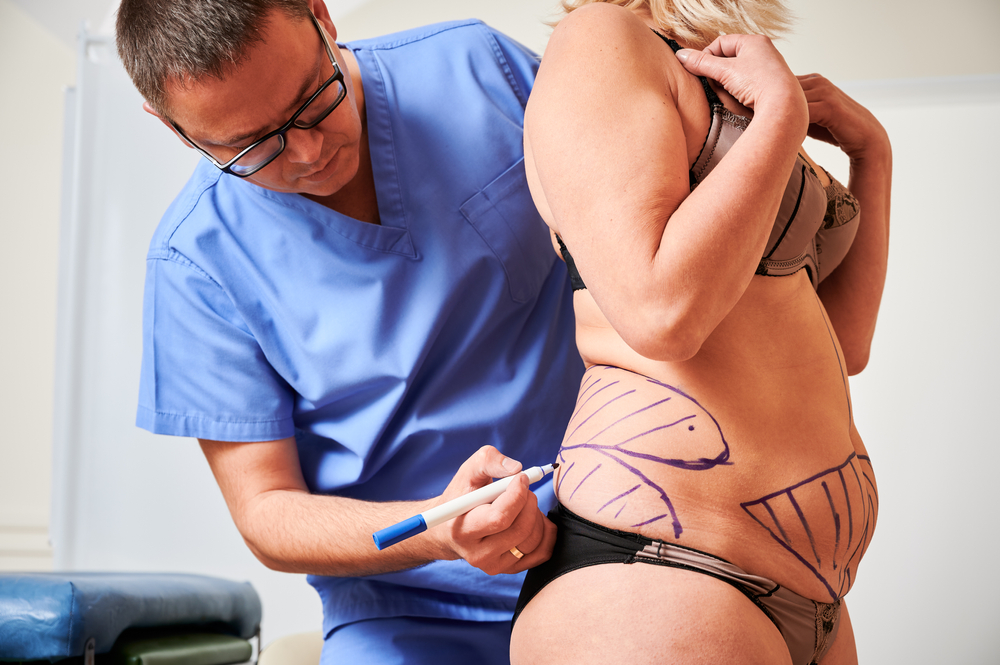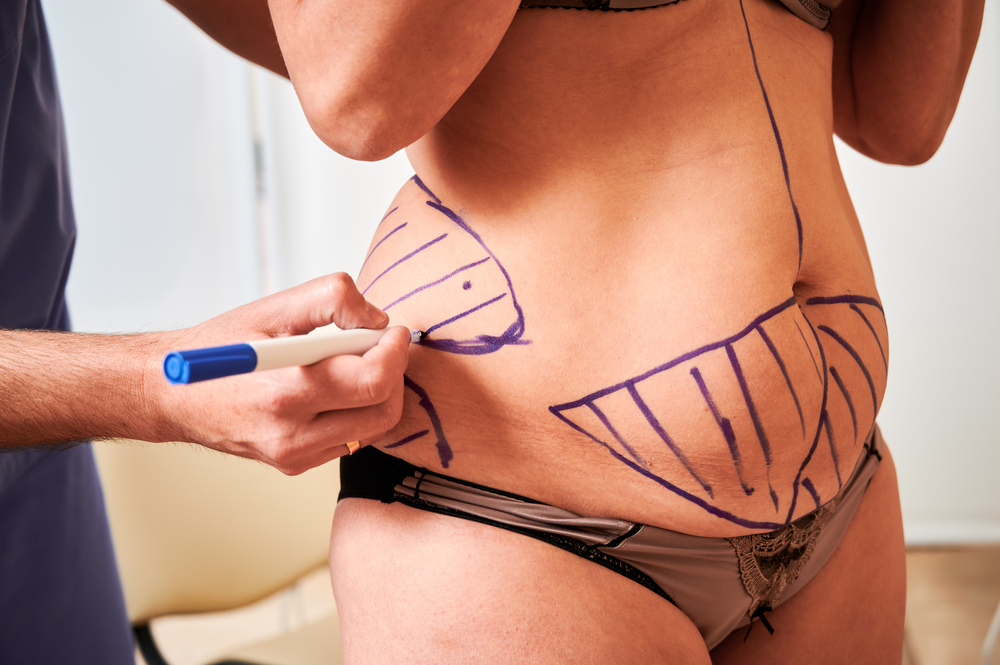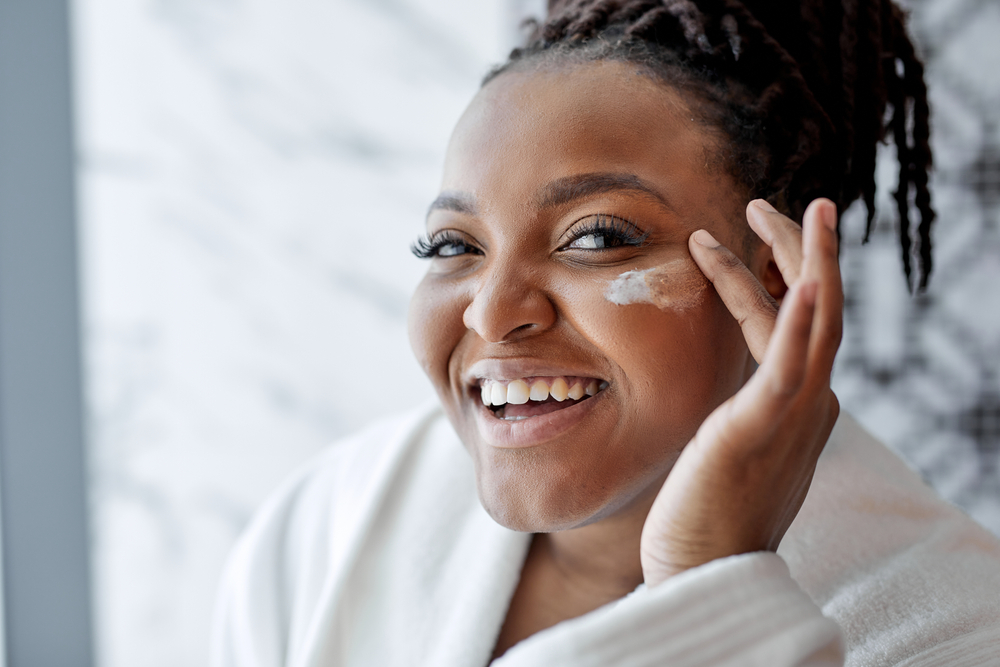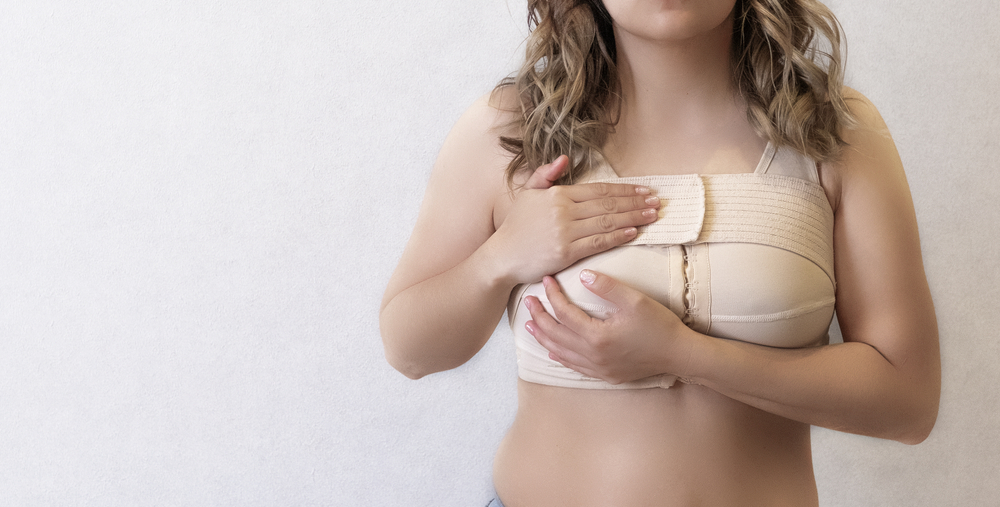Liposuction is a plastic surgery procedure that uses suction to remove fat from specific areas of the body, including the stomach, hips, thighs, neck, arms, or buttocks. Liposuction can also sculpt or shape these areas and can be referred to as a form of body contouring. Liposuction may also be referred to as lipoplasty.
Many people think liposuction would be categorized as a weight-loss procedure, but that’s not true. Fat is actually very light and even the removal of 4 to 5 liters of fat only reduces someone’s weight by a few pounds. If you’re overweight and trying to lose weight, you can lose more weight through diet and exercise, bariatric surgery such as a gastric sleeve or gatric bypass, and more recently through repurposed diabetes medications such as Ozempic or Wegovy. If that is you, liposuction is likely not the solution you’re looking for.
Table of Contents
ToggleWhat Is Liposuction?
Liposuction is a cosmetic, plastic surgery procedure that removes fat. It permanently removes fat cells (adipocytes) that store fat in a particular area of your body that you want to improve. Liposuction helps get rid of fat deposits that don’t respond to diet and exercise.
Other names for liposuction are lipoplasty or “lipo” or “liposculpture.”
If you have a lot of body fat in specific areas of your body that resists diet and exercise, liposuction could be an option for you.
Liposuction gives you the ability to remove stubborn and unwanted fat from areas of the body, these would include:
- Abdomen and Waist
- Upper Arms
- Chest and Back
- Hips and Thighs
- Buttocks
- Calves and Ankles
- Hips and Thighs
- Face, Neck and Chin
In addition, liposuction can sometimes be used to reduce additional breast tissue in men, a condition called gynecomastia.
With weight gain, fat cells swell and get larger. Liposuction specifically targets fat cells and removes them forever. The amount of fat removed will always vary from one person to the next. It depends on the volume of fat in any one location. The resulting shape changes are usually permanent assuming you maintain your weight through continue diet and exercise. Fat cells that are not removed can still expand if you don’t take care of your body.
Once liposuction is complete, the skin can contract, shrink, and mold itself to the underlying anatomy. However, for this to occur, you need good skin tone or elasticity. If your skin is thin and inelastic, as is sometimes the case after pregnancy, weight, loss, or with age, the skin may get loose.
Liposuction doesn’t help with dimpled skin from cellulite or other differences in the surface of the skin. Liposuction also doesn’t remove stretch marks.
To have liposuction, you must be in good health without conditions that could make surgery more difficult. These can include blood flow problems, coronary artery disease, diabetes or a weak immune system.
Is Liposuction Surgery Right For Me?
If you’re considering liposuction as an option, you should meet certain requirements to make sure their procedure is effective and safe. Candidates who qualify for a liposuction procedure include:
- Any adult that has good overall health.
- Any adult that is a nonsmoker.
- Adults with an average or slightly above-average weight.
- Someone that has firm skin with elasticity (high in the elastin protein) and good muscle tone.
- People who have pockets of fat that don’t respond well to diet and exercise.
- People with realistic goals for the outcome of the procedure.
These are common qualifications that healthcare providers evaluate before recommending treatment. Your provider will let you know if liposuction is right for you and if it is, they will keep you informed about the next appropriate steps to get your surgery done.
Who’s Not A Good Candidate For Liposuction?
Certain factors could cause a liposuction procedure to be unsuccessful or pose a threat to your overall health. You might not be a candidate for liposuction if you:
- Anyone that has a BMI over 25.
- Anyone that has a life-threatening or serious health considering that could make healing very difficult.
- Anyone that may have unrealistic expectations for the procedure.
- Anyone that has poor skin conditions and quality.
While liposuction can fix a lot, it can’t improve saggy, loose skin. This is very common after someone loses significant weight loss. If your goal is to get rid of loose skin, your healthcare provider might recommend liposuction along with excess skin removal to give you a complete solution.
Where On My Body Can I Get Liposuction?
You can have a liposuction procedure anywhere on your body where you have deposits of fat. Some of the most common areas of your body include your:
- Abdomen, stomach or waist
- Hips or “love handles” (flank)
- Back or chest
- Face, cheeks, chin or neck
- Buttocks
- Inner knee, calves or ankles
- Thighs
- Upper arms
Who Is A Candidate For Liposuction?
Candidates for liposuction should meet certain requirements to make sure their procedure is effective and safe. Candidates who qualify for a liposuction procedure include:
- Adults in good overall health
- Adults that have an average or slightly above-average weight
- Adults with pockets of fat that don’t respond well to diet and exercise
- Adults with firm skin with elasticity (high elastin protein) with good muscle tone
- Adults that don’t smoke
- Adults with realistic goals and expectations for the procedure
These are common qualifications that healthcare providers evaluate before recommending treatment. Your provider will let you know if liposuction is right for you.
Who Is Not A Candidate For Liposuction?
Certain factors could cause a liposuction procedure to be unsuccessful or pose a threat to your overall health. You might not be a candidate for liposuction if you:
- Adults that are underweight
- Adults with poor skin quality
- Adults that have a BMI over 25
- Adults with serious, life-threatening health conditions
- Adults with serious conditions that may slow normal healing
- Adults with poor skin quality
- Adults that have unrealistic expectations for the procedure
Liposuction alone can’t improve saggy, loose skin. This is common after significant weight loss. If your goal is to get rid of loose skin, your healthcare provider might recommend liposuction along with excess skin removal.
Why Is Liposuction Done?
You might consider having a liposuction procedure if you:
- Tried dieting and exercising for several years and certain areas of your body don’t respond or refuse to shrink naturally.
- Want to smooth out fatty bulges on your body.
- Want a permanent body modification.
- Can dedicate four to six weeks for your body to recover after surgery.
Can Liposuction Help With Obesity?
Liposuction shouldn’t be viewed as a weight-loss solution, nor does it treat excess weight or obesity. Most people choose to have a liposuction procedure to remove unwanted fat from certain parts of their body. Liposuction isn’t a full-body weight-loss method. While the treatment is permanent, your body can regrow fat where you had it removed.
Everyone’s body is unique. You might follow a nutritious diet and exercise regularly but still have trouble losing weight. If you have excess weight, talk to your healthcare provider about weight management treatment options to help you reach your goals.
How Common Is The Procedure?
In some years, liposuction is the most commonly performed plastic surgery procedure. In the United States, more than 200,000 liposuction procedures happen each year. Around the world, liposuction represents between 15% and 20% of all plastic surgeries.
What Types of Liposuction Surgery Are Available?
There are different types of liposuction techniques and technologies available to meet your goals including:
- Tumescent Liposuction: Tumescent liposuction uses a solution of saline (salt water), a local anesthetic (lidocaine) and epinephrine to inject into the fat. Tumescent solution numbs the subcutaneous tissues, constricts blood vessels, and allows a relatively painless and bloodless fat removal. It is the standard technique used with all forms of liposuction. It can be used in large volumes to allow liposuction while awake often with additional medications to provide additional pain relief.
- Suction-Assisted Liposuction (SAL): Suction-assisted liposuction is the oldest form of liposuction that attaches a vacuum to manual cannula to remove fat from your body.
- Ultrasound-Assisted Liposuction (UAL): Following placement of tumescent solution, ultrasonic energy can be pre-emptively applied to the fat via a metal rod placed underneath your skin to liquefy your fat before removing it from your body, reducing pain, blood loss and creating some skin contraction.
- Vibration Amplification of Sound Energy at Resonance (VASER): VASER liposuction is the latest and greatest form of ultrasound or UAL. It also uses a stainless cannula that gently pulses ultrasound waves to easily disrupt fat from their fibrous, honeycomb home, leading to less bleeding, pain and a faster recovery. Because of its pulsed engineering, there is fat less chance of burns and other complications traditionally associated with UAL.
- Power-Assisted Liposuction (PAL): Power-assisted liposuction is an adaptation of SAL that instead uses a powered cannula much like a reciprocating saw that moves back and forth at a high speed to disrupt and remove fat. It is a much more efficient form of liposuction and creates less trauma for both the surgeon and the patient. PAL is the primary liposuction tool used in conjunction with tumescent solution and either UAL, VASER and laser-assisted technologies to remove fat that has been emulsified.
- Laser-Assisted Liposuction (Smartlipo™ and SlimLipo™): Laser-assisted liposuction used laser energy to disrupt and melt fat bring to removal with either PAL or SAL. The most common wavelength used is 1064 nm Nd:YAG energy which is used with the SmartlipoTM device.
Your plastic surgeon will discuss the releveant and optimal forms of liposuction to achieve your desired goals.
How Do You Prepare For Liposuction Surgery?
Before you undergo liposuction, the surgeon should discuss before and after care which is critically important to your results. The surgeon will also review your medical history and discuss any relevant medical conditions you have. Please tell the surgeon about any medicines, supplements or herbs you are taking.
There are a few things your surgeon will recommend that you stop taking before your surgery, and may include blood thinners (such as aspirin) or nonsteroidal anti-inflammatory drugs (NSAIDs), at least 7 days before surgery. It’s also possible you may need to obtain certain lab tests before your procedure.
For those of you that may only need a small amount of fat removed, your surgery procedure can somtimes be done under local, tumescent anesthesia. For larger volumes of fat removal, general anesthesia is most often required. In either scenario, you’ll need to find someone to drive you home and stay with you for at least the first night after your surgery.
Before you get your liposuction surgical procedure, the surgeon will mark circles and lines on the areas of your body that will be treated much like a topographic map. The surgeon will also take photos so before and after images to allow for proper clinical analysis and optimal execution of the liposuction procedure.
How your liposuction procedure is done depends on the specific technique that’s used. Your surgeon will select the technique based on your unique treatment goals, what location on your body needs to be treated, and whether you have had other liposuction procedures in the past.
- Suction-Assisted Liposuction. This is the oldest form of liposuction. The surgeon will inject a mixture tumescent solution (salt water, lidocaine and epinephrine) into the area that will be treated through very small incisions. Additional medications are often administered to further decrease pain. The surgeon will then insert a thin hollow tube or cannula under the skin which is attached to a suction device. The fat and tumescent fluids are then removed from your body into a collection cannister.
- Ultrasound-Assisted Liposuction (UAL). UAL is an adjunct to either SAL or PAL that breaks up fat compartments allowing for easier removal. During your UAL, the surgeon will insert a metal rod that directs energy under the skin. This energy will disrupt fat globules and liquify them much like a blender, making it easier to remove. VASER-assisted liposuction is a the next generation, 2.0 version of UAL that is safer and more effective.
- Laser-Assisted Liposuction (LAL). With LAL, the surgeon will use a laser fiber through a small cut in the skin and break down fat deposits following application of tumescent solution. Once the fat is broken down, it can then be removed using a thin tube (PAL or SAL). LAL has fallen out of favor due to complications and inferior results in comparison to other technologies.
- Power-Assisted Liposuction (PAL). This type of liposuction also uses a thin tube that moves back and forth at a high frequency to remove fat. The vibration with this specific procedure helps the surgeon pull out tough fat quickly and efficiently. PAL may sometimes generally causes less pain and swelling and is more precise. PAL is very effective for patients requiring large volume fat removal. It is the most common type of liposuction technology today and is often used in conjunction with VASER.
What Happens During The Procedure?
All liposuction procedures use tumescent solution (a combination of salt water, local anesthetic such as lidocaine and epinephrine) to numb the fat layer and allow for bloodless extraction of fat. Tumescent anesthesia can be combined with oral or IV pain medication, along with various forms of anesthesia, including twilight anesthesia, or a full general anesthetic.
The surgical team will be monitoring you during the entire procedure, and will be watching your blood pressure, blood oxygen, and heart rate. Although this is rare, if you feel pain during a local anesthesia or awake procedure, make sure you let your plastic surgeon know. They will be able to adjust your medications during procedure.
These procedures can last for several hours, and it depends on how much fat will be removed from your body.
For those of you that may be given general anesthesia, you’ll end up waking up in a recovery room. Most patients will spend 1-2 hours in the hospital or clinic so that everyone can monitor you to make sure you’re recovering. If a large volume lot of fat and fluid is removed (> 5 liters), it’s possible you may need an overnight stay to ensure you’re not dehydrated or in shock from losing so much fluid. The scenario is less common these days because there are many unnecessary safety risks with large volume liposuction.
What Happens After The Procedure?
Once your liposuction surgery is complete, you’re going to experience some discomfort, swelling, bruising, and pain. This is perfectly normal for most cases. Your surgeon will likely give you medications to help control the pain and to lower your risk of infection.
Depending on your unique situation, the surgeon may choose to leave your incisions open or put in temporary drains to help drain fluid from your body. Most people will be asked to wear tight garments after the surgery to help with swelling. These garments, also known as compression garments, essential to an optimal result. They are typically worn for a minimum of six weeks and preferably longer. There will be multiple changes in the size of the garment as your body shrinks.
In addition, lymphatic massages, a critical element to optimize your recovery. I’m Fattic massage expedites the disappearance of swelling, reduces pain and optimizes your acidic outcome. To not use massage in the aftermath of liposuction is in my opinion malpractice. We recommend patients get a massage the next day after their procedure.
As for going back to work, you’ll likely need at least a few days off. It could take weeks before you can start doing your usual activities, such as exercising and lifting. During this time, expect some differences in shape as the remaining fat settles into position. It will take weeks to months for the swelling to go down and to see the final results from your liposuction.
Liposuction Surgery Results
Once your liposuction surgery is complete, swelling will last several months. Most patients see an immediate change, but the final results take anywhere from 3 to 6 months to manifest.
Fat removal, following liposuction is permanent. Those cells are gone forever. You can still gain weight and have other fat stores increase in size if you don’t watch your diet and continue to exercise. Long-term health maintenance is critical to maintaining your results. Also note that skin elasticities which gets worse with age, weight loss of pregnancy can sometimes be made worse with liposuction so keep that in mind.
You can check out our Before and After Liposuction Results here.
What Are The Risks?
There’s always risks with plastic surgery, liposuction is not different. These risks include bleeding and a reaction to anesthesia. Other risks specific to liposuction include:
- Contour Irregularities: Your skin may appear bumpy, wavy or withered due to uneven fat removal, poor skin elasticity and scarring. These changes may be permanent.
- Infection. Skin infections are rare but possible. A severe skin infection may be life-threatening.
- Fluid Buildup: Temporary pockets of fluid, called seromas, can form under the skin. They may need to be drained using a needle.
- Numbness: You may feel temporary or permanent numbness in the treated areas. Nerves in the area also may feel irritated.
- Internal Puncture: Rarely, if the thin tube used during surgery penetrates too deeply, it may puncture an internal organ. This may require emergency surgery to repair the organ.
- Fat Embolism: Pieces of fat may break away and become trapped in a blood vessel. They then may gather in the lungs or travel to the brain. A fat embolism is a medical emergency.
- Kidney and Heart Problems: When large volumes of liposuction are performed, fluid shifts. This can cause possibly life-threatening kidney, heart and lung problems.
- Lidocaine Toxicity: Lidocaine is a medicine that is used to help manage pain. It’s often given with fluids injected during liposuction. Although lidocaine usually is safe, lidocaine toxicity sometimes can occur, causing serious heart and central nervous system problems.
The risk of complications rises if the surgeon works on larger body surfaces or does multiple procedures during the same operation. Talk to the surgeon about how these risks apply to you.
Most Common FAQs For Liposuction
Can older adults get liposuction?
Age usually isn’t a factor that your provider needs to consider when discussing liposuction. However, people over the age of 65 may have skin that’s less firm or has lost some elasticity.
Can men get liposuction?
Yes. People of any sex can undergo liposuction. For men or people assigned male at birth, healthcare providers may recommend liposuction to treat some types of gynecomastia or enlarged male breast tissue.










